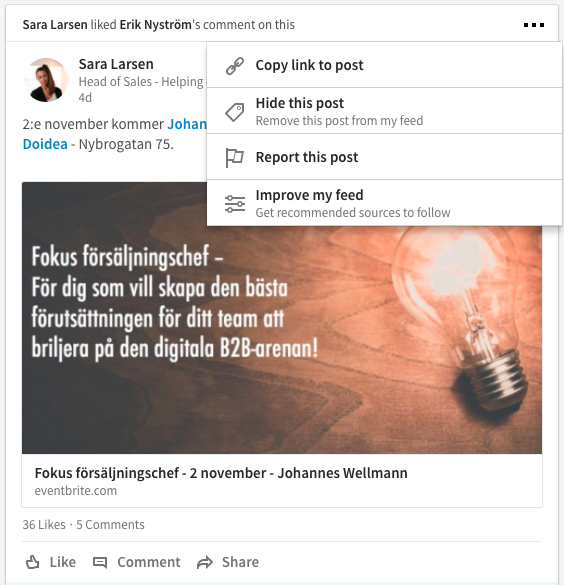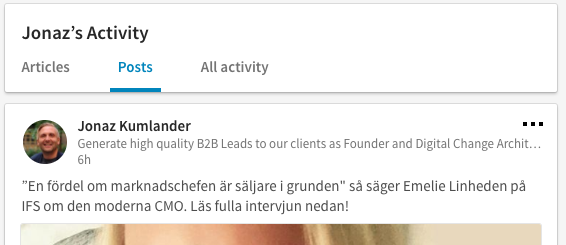How to become relevant on LinkedIn and understanding the algorithm
A question we often get when talking about “social selling” is how often you should share content and why some posts are spread wider than others. Our Swedish part of the company, Avidly Sweden, have done some research and dug out the information you have been asking for. A lot of it came from LinkedIn’s own blog – LinkedIn is in fact a lot more transparent than most social media about their algorithm.
The blog post we are referencing can be found here, but if you keep reading we have summarised the most important points for you right here.
The four stages of sharing

1) Create content
It all starts with the creation of content and you publishing this on LinkedIn. This can be in the form of an image, text, a video or a link. As soon as you hit publish, the system-based check starts.
2) System-based check
The content is qualified automatically as clear, low quality or spam. Content categorised as low quality or spam will never be distributed to your network and will therefore not bring you any engagement.
According to LinkedIn, the system-based check takes no more than 200 milliseconds and has reduced spam and the amount of low-quality content by almost 50 percent. Some of the content categorised as spam by the algorithm does, however, get passed on to user-based check.
3) User-based check
Members of the LinkedIn-team will take a closer look at some of the low quality and spammy content to see if the system made the right choice. This also helps the system continuous learning process to improve the control and categorising of the content.
4) Member-based check
Content qualified as “clear” will be displayed to a small segment of your network. This is the point where the members-based check takes over.
The analysis of how your network interacts with your content will begin. Plus and minus points will be given based on different criteria. Plus points will be awarded for likes, comments and shares, while minus points are given whenever someone reports your posts, hides it or stops following you after a specific post.
If the posts get too many minus points deducted, the content is categorised as low quality or SPAM. On the other hand, if your content receives a lot of likes, comments and shares, it can keep its place in the feeds of your network.

If your content receives a lot of points, it might be checked again – and this could result in the post being shared outside your network. This is why engagement and sharing is so important.
Members-based check is used to decide where your content will be shown. If it does not generate any engagement it can be removed from your network’s news feed and it might only be visible among your activities on your own profile.
If your post generates a lot of engagement, the post can be sent back to a user-based check – this time to see if the content is particularly interesting and it should be shared further. This can lead to your content “trending” on LinkedIn.

In summary
So what does all this mean for you? First of all, think about what you publish on LinkedIn. Does it create value for your network? You should also be aware of the importance of engagement in this social media.
All indications point to the fact that content that gets posted and then shared by others achieve the best result. A like, on the other hand, does not weigh as heavy.
If you want your content to reach far you should make sure that you are not just collecting likes, but instigating discussions that make people want to share your content.
Real Growth. Real Impact.
HubSpot for startups: Leveraging the platform and unlocking growth w. Ragini Campion
Making AI adoption not a big deal with Mike Kaput from The AI Show
HubSpot's Spring Spotlight 2025 was not what we expected
The Power of Community in Marketing
The Return of Human Marketing in an Automated Age | Avidly Talks
How to make change projects a success - Change management tactics
How to prompt AI for great creative ideas
See why enterprises choose Avidly
Let’s build your HubSpot success story
Compelling final call to action - with accompanying link to Contact page








